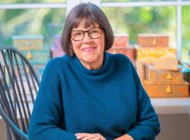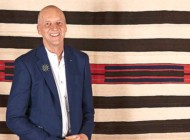
On October 9, the Westerly Museum of American Impressionism (WMAI) opened its doors to the public for the first time. Its galleries are filled with more than 150 paintings from the collection of its founders, Dr Thomas P. and Cynthia D. Sculco. Antiques and The Arts Weekly sat down with the pair to discuss the motivation behind the museum, and what visitors can expect.
You are a surgeon and a professor of nursing. What inspired you both to start collecting American Impressionist art?
Cynthia: We’ve been in New York for our careers, but we’ve always had our home in Westerly and grew up near the Pawcatuck River and the ocean. I think the inspiration really came from seeing these beautiful paintings that were so warm; it just reminded me of living on the coast, and I sort of fell in love with the natural beauty of this artistic genre. It was so attractive to me visually. I think that was sort of an incentive. So, when I saw something so familiar to growing up in this environment, it really brought back those memories and sort of made me focus my attention on that type of art.
Thomas: I would just add that Cynthia and I grew up in Westerly. And she’s a 13-generation Rhode Islander, and I’m three. And so, this area, as she pointed out, connects us to art at our roots. The American Impressionists painted outdoors — they painted landscapes, they painted seascapes — and it just relates to where we grew up. Maybe because we went to New York, we felt a little bit of longing for that environment. So, we saw these paintings and we said, “Okay, let’s put them on the wall!”
It makes us remember where we’re from and what we love. We started collecting about 40 years ago with one painting. The journey really started when we met a very interesting expert in American Impressionism who used to work at a famous gallery in Boston and moved back to Rhode Island. He got us excited about American Impressionism, and it took off. Then, all of a sudden, 40 years later, we’ve got 300 paintings!
So, what are we going to do with all these paintings? We’d often thought about building a museum over the last 10 years. Then the site of this museum became available — it was an old nursing home, which closed after Covid. It is right on the river, so the beauty of the museum is you look at a seascape and then you look out the window and you see the same scene. So, that really reinforced our interest in building it. The nursing home was in need of lots of work; we kept the foundation, but the building is all new.
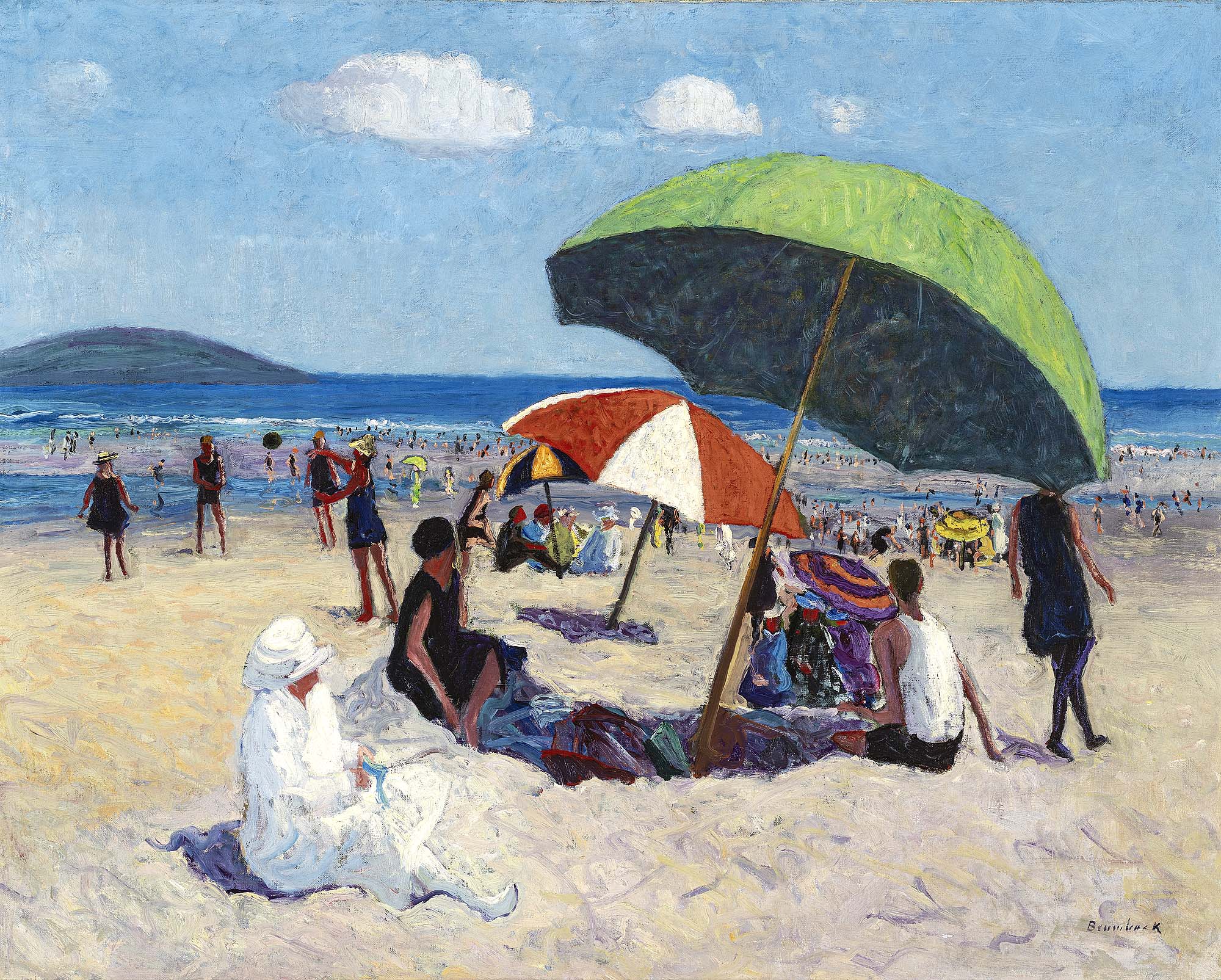
Louise Upton Brumback, “Good Harbor Beach,” circa 1915, oil on canvas. Image courtesy Paul Mutino.
I know you have 300 works in your collection, but can you pick out a few of your favorites?
TS: The American Art Review’s latest issue just came out a couple of days ago, and the painting on the cover is one of my favorites — it’s from our museum! The journal did an article on the museum and the work on the cover, “Delphiniums Blue – No.2,” is by Charles Courtney Curran, and I love this painting. It’s delicate, beautiful, great color, great light and very different than the American art before this era. Curran loved to paint women. Sometimes they’d be on a hill with the blue sky in the background — I mean, they were just gorgeous paintings.
There’s another painting at the museum [“Good Harbor Beach”] showing a beach scene with a big green umbrella and people enjoying the beach around 1900, with different bathing suits than today. And it’s got great color, great feeling; it’s a brilliant painting. It’s by a woman artist named Louise Upton Brumback, who is not the most famous painter in American Impressionism, but she’s great. I think those two paintings are probably my favorites, although I like them all.
CS: I like Jane Peterson. She’s a woman artist, of course, and worked in Europe where the American Impressionists studied first and got their skill set for the Impressionist paintings. I like one that we have, it’s called “Dancing Waters.”
Certain paintings you just sort of get pulled into; you just look at them and you have an emotional connection to them. And whether they bring back memories or whatever it is, you know you like them right away. I relate to that with this painting. If you look outside and see water when the sun’s out, you see its reflection. And I’m always amazed how Peterson made that water really sparkle and come alive in this work.
What was the motivation behind opening this museum?
TS: I think the motivation was that we grew up in this community, which we love, and we wanted to share this collection with people in this community; we have great friends here. Even though we’re in New York, this is where we wanted to put the museum. It’s been amazing. The museum has been open for, what, 16 days? We’ve had around 1,300 visitors. It’s incredible. People are incredibly enthusiastic for the museum in this area. We’ve been working on this for three and a half, almost four years. We hear repeatedly: “It’s amazing! We love these paintings. We love the location of the museum.” So, I think that was the motivation — to try to share the experiences and the traditions of these American artists, most of them from New England, with people in this area who have never seen these paintings or artists, for the most part. And then, to try to re-energize interest in this art, because it’s so great and people just don’t know it.
CS: The community has been so supportive. Everybody that visits is so appreciative; they are continually telling us, “Oh, thank you, thank you.” We named it the Westerly Museum of American Impressionism, and I think that’s so important because we wanted to honor the community in which we grew up. I think they appreciate that.
TS: We felt the community’s name should be on the museum, not ours.
CS: The response of the community has been very heartwarming. People are coming from not only Westerly but from all over New England. They are bringing their children. We hope to have programs going forward for schools and things of that nature. We’re very happy that so far — and I think it will continue — we’ve gotten a very positive reception from our community that is very grateful we did this.
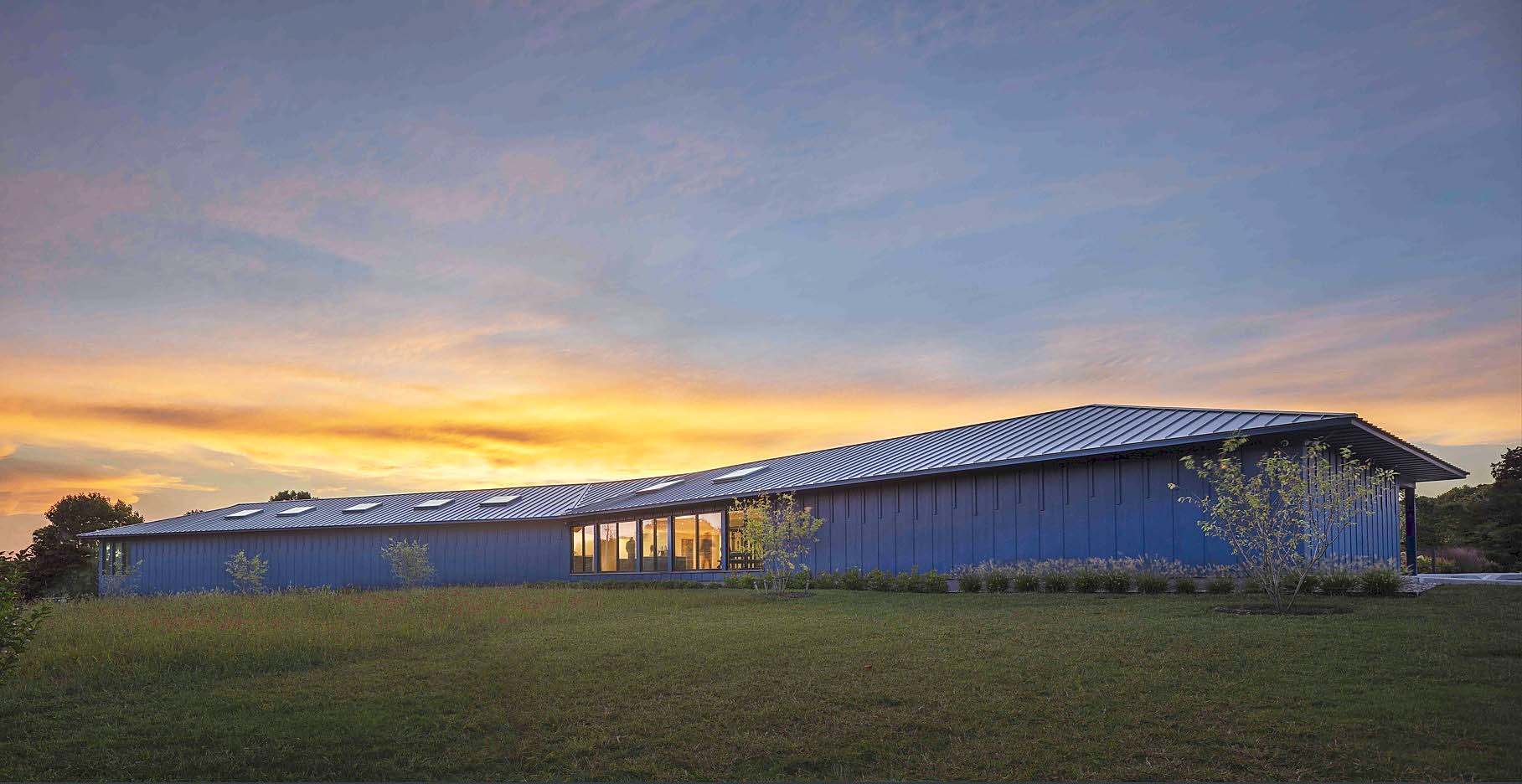
Exterior, Westerly Museum of American Impressionism. Image courtesy Paul Mutino.
Can you describe the process of working with Centerbrook Architects & Planners to achieve your vision for the museum?
CS: We had a very positive experience. Tom and I had a vision of what we wanted. We’ve been to so many museums over the years. In terms of the building’s layout, it’s one floor. It was a nursing home, and we used the same footprint. We have a great basement for storage, and the equipment needed for temperature and humidity control is very complicated. It’s one level, the museum itself, which is great. It really focuses, as Tom said before, on nature.
There’s a museum in Lisbon, Portugal, The Gulbenkian; it’s a beautiful museum. I took lots of pictures of it before we started our dialogue with Centerbrook. It has large windows looking out into their natural space, which were gardens. I thought it was wonderful because you’re indoors looking at beautiful artwork, but then visually, you’re looking out into these beautiful gardens. So, I thought that concept would be perfect for our museum.
TS: I agree. We found Centerbrook because we knew the former director at the Florence Griswold Museum in Old Lyme, Conn., and we asked her who they’d used, since they’d done work on the museum. One day I just called Centerbrook blindly. The architect, Justin Hedde, picked up the phone, and we started talking, and we later went and met with him. And then, we spent a great deal of time discussing our ideas. We really wanted to take advantage of the natural beauty of the site, where it sits, and bring that inside. He agreed 100 percent, and it was a great team with them and our builders, Deslandes Construction from Warwick, R.I.
There are 11 different galleries as you enter the museum. The initial narrative of the museum is traveling through the different art colonies, most in New England. First, you’re in Old Lyme, then Cape Ann (Mass.), then Ogunquit, Maine, and finally you’re in the Boston area. Each gallery tells a story and has paintings that represent that particular colony. So, the way [Hedde] laid it out was perfect and really lent itself to the paintings. There’s also a large gallery that’s probably 20 feet high, which you enter from one set of galleries through to another set. That opens into a huge space, which must have 35 seascapes of different harbor scenes, different boating scenes — it’s all about the water. As you go through the last gallery, you end up in a spectacular space, which looks right out on the river. You can go outside and walk around, and the views are really special. You’re looking at the river. It’s a bright, vibrant space, and I think people identify with it.
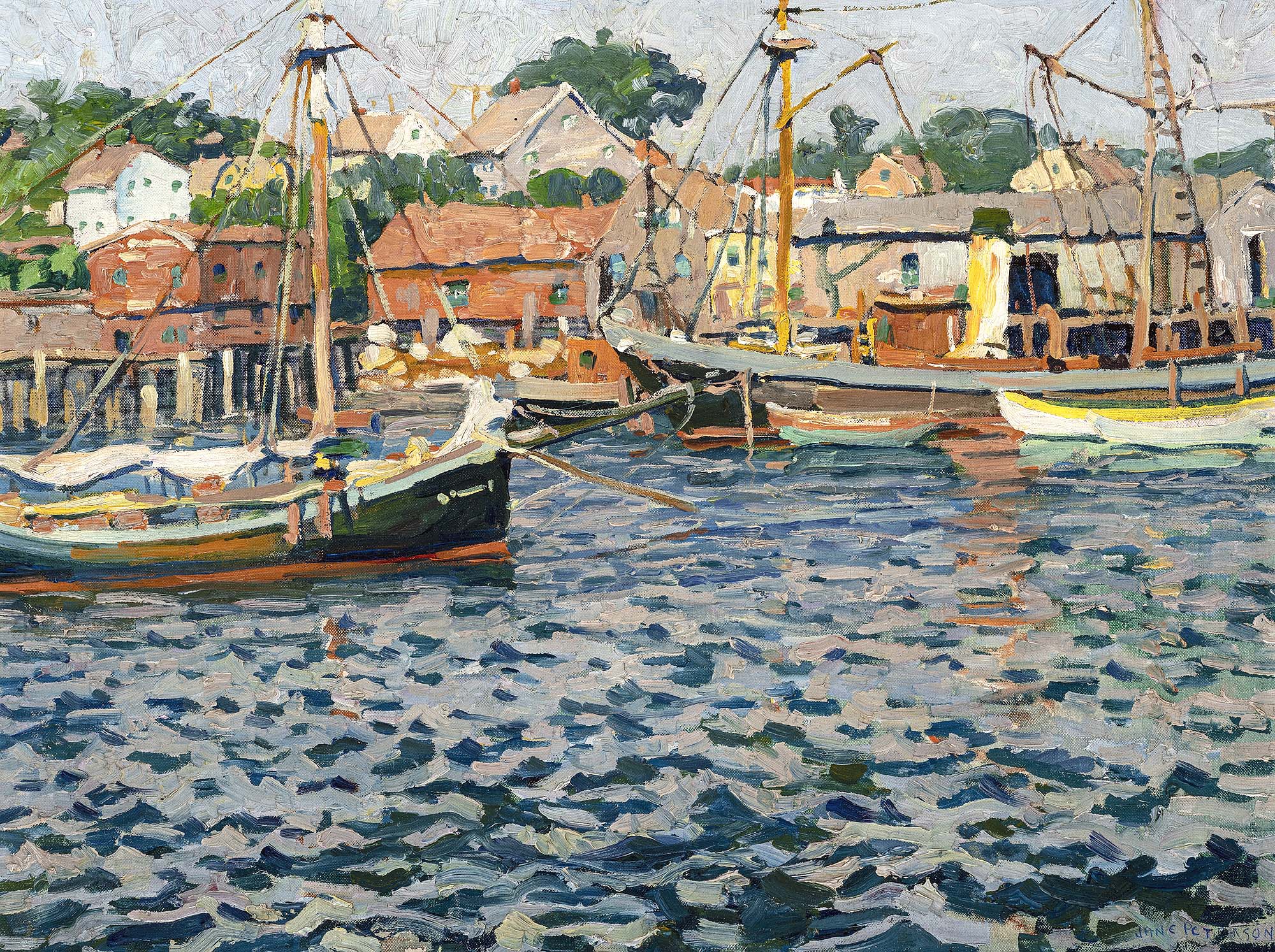
Jane Peterson, “Dancing Water, Gloucester, MA,” date unknown, oil on canvas. Image courtesy Paul Mutino.
Not only do you have many works by the renowned American Impressionists but you also have a plethora of paintings by lesser-known artists. Why was it so important for you to showcase these works at the WMAI?
TS: We have paintings by Hassam, Sargent, Twachtman and Tarbell, those most famous of the American Impressionists, but also — and one of the things we’re trying to do — is show that there are so many great artists lesser known in our collection. I mean, they’re as good as any one of the top 10. They’re underappreciated, and most people don’t know anything about them. The idea of the museum was to really popularize and re-energize an interest in these great, great artists. Again, many of them were women.
In my opinion, it’s very interesting. You had the Hudson River School, which was very popular. And the paintings are great. They’re a little bit staid, there’s not a lot of dynamism in them, but they’re well done. Then around the 1870s, the Impressionists start in France and Europe. And all of a sudden, the Americans start going over there and that whole movement takes off. And then around 1920, the more contemporary art begins. American Impressionism is bypassed a little bit. People know Hudson River, and then it’s, “oh yeah, I know Frankenthaler and all the more modern artists.” And they forget about the Impressionists! And so, one of the goals is to re-energize an interest in this genre of American art.
CS: I think everybody knows about Monet. They know the French Impressionists. Even the Brooklyn Museum has a new exhibit of “Monet and Venice.” But they forget about the American Impressionists. We have a whole room highlighting American Impressionists traveling abroad. We have Jane Peterson; she has a scene of the Venice canals, and [John] Leslie Breck did one; we have about four artists that painted Venice.
I think what’s interesting is to compare the two. I mean, many people have been to museums all over the world. And you have to be attracted to this art form. Because it is so vibrant, I think it’s optimistic. Americans, for the most part, are optimists. The paintings, I think, appear happy.
We would also say that many of the artists in the collection that we love, many people have not heard of or seen. The quality is superb. We fell in love with the painting first, and then we’d notice who the artist was, and then we would go back and if paintings from that artist came up again, we’d look at them very seriously because we knew we liked that artist. We wanted to showcase those artists that aren’t well-known, give them an opportunity to really be seen. When the public comes in, they are amazed at the quality of the paintings by people they never heard of.
—Kiersten Busch


